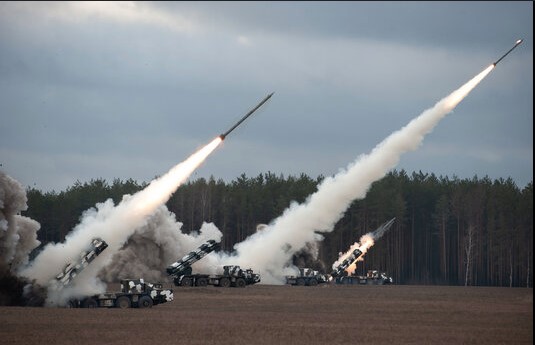The U.S. Army has called on defense manufacturers and technology experts to create advanced missile launchers under the Common Autonomous Multidomain Launcher (CAML) project. These CAML launchers must be mobile, air-carried, and capable of firing both medium- and heavy-range missiles. They must also be fast to deploy, easy to move, and able to operate in tough environments across the globe.
Army Launches CAML Project for Next-Generation Missile Systems
This initiative is part of a new program called the Common Autonomous Multidomain Launcher (CAML). The U.S. Army’s Rapid Capabilities and Critical Technologies Office is leading a new project. This office is based at Redstone Arsenal in Alabama. In late June, it released a formal request to industries. The request calls for building a new kind of missile launcher. This launcher should be able to operate with or without a human crew. It must also be easy to move by air. The new launcher is part of a project called CAML.
Its purpose is to support or replace the Army’s current rocket and missile launchers. What sets CAML apart is its focus on autonomous operation, meaning it can be controlled remotely or even run by itself. This increases soldier safety and makes the system faster and more flexible.
U.S. Arms Batanes Islands with High-Tech Missiles Facing Luzon Strait Near Taiwan
Two CAML Versions to Handle Different Missile Types
There will be two versions of the CAML launcher: CAML Heavy (CAML-H) and CAML Medium (CAML-M). Each version carries different kinds of missiles and mounts on different types of military vehicles.
The Army will mount the CAML Heavy launcher on a M1075 Palletized Loading System (PLS) or a similar heavy-duty tactical truck. Consequently, it will be able to fire large, long-range missiles like the Tomahawk Land Attack Missile (TLAM) and Patriot Advanced Capabilities Three (PAC-3) Missile Segment Enhancement (MSE). These are powerful weapons; in other words, they are used for hitting distant targets or intercepting incoming threats. Most importantly, a key feature of the CAML-H is that it will be able to reload missile containers automatically, requiring little to no help from humans.
On the other hand, the CAML Medium launcher will be placed on a Family of Medium Tactical Vehicles (FMTV). It will work with munitions from the Multiple Launch Rocket System (MLRS). This includes guided and unguided rockets and missiles like the Army Tactical Missile System (ATACMS) and Precision Strike Missile (PrSM). Military forces use these for medium-range attacks. They currently fire them from systems such as the M270 MLRS and M142 HIMARS.
Silent Sanctions Failure? Russia’s Banderol Missile Assembled with 23 Foreign Components
Along with the CAML-M launcher, the Army also wants to build an Autonomous Resupply Vehicle (ARV). This vehicle will be able to reload missile pods and containers by itself, which reduces the number of people needed on the battlefield and makes operations quicker and safer.
For testing and evaluation, the Army has requested:
- One CAML-M launcher that can fire MLRS-type munitions.
- One autonomous resupply vehicle to work with it.
- Four CAML-H launchers capable of firing the Tomahawk missile.
- One launcher for the PAC-3 interceptor missile.
System Designed for Autonomy, Flexibility, and Mobility
The Army’s goal with the Common Autonomous Multidomain Launcher is to improve fire support systems by making them more mobile, intelligent, and safe. Therefore, these new launchers will be able to move across difficult terrain, be flown to different parts of the world, and set up quickly in a variety of conditions.
Another major focus of the project is autonomy. To clarify, CAML vehicles will come with a leader vehicle and special software kits that allow them to move, aim, and reload with very little human input. In addition, the system will use standardized parts and interfaces, which makes it easier to add future weapons and technology.
Robotic systems will handle resupply and movement tasks. As a result, these systems will reduce the need for soldiers to perform dangerous duties directly. Most importantly, this will help lower the risk faced by Army crews. Moreover, it will speed up missile launches and support a wider range of military missions.
North Korea’s New Missile Launchers: A Growing Threat
The Army will test the the Common Autonomous Multidomain Launchers, resupply vehicles, and leader systems together as complete units. These systems will share control systems and interfaces, which will allow engineers to update or modify them easily when needed. Designers have built the launchers to work alongside current missile systems while adding new abilities such as automatic reloading, air transport, and remote operations.
The Army has emphasized that these systems must be effective and able to operate anywhere U.S. forces are deployed. The CAML project is a major step in the Army’s push to modernize how it launches and manages powerful missile systems.

